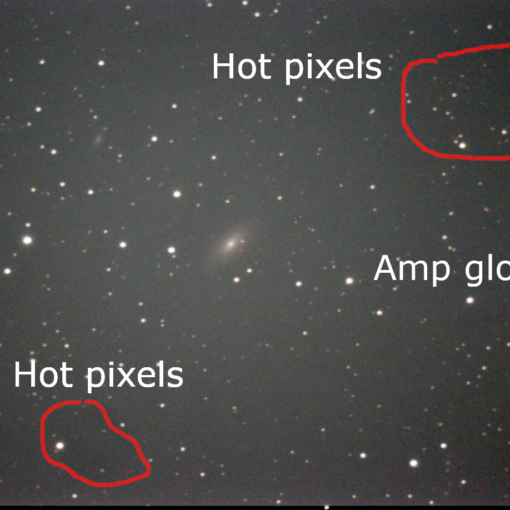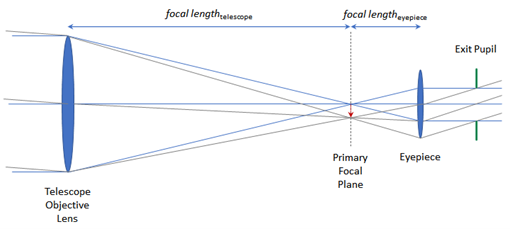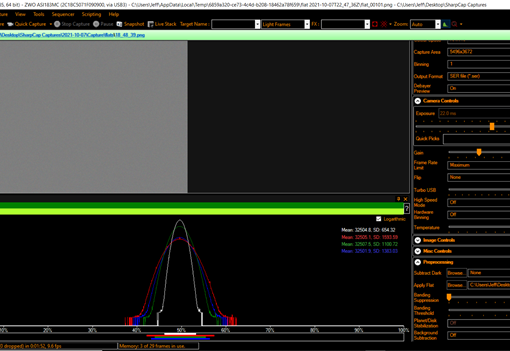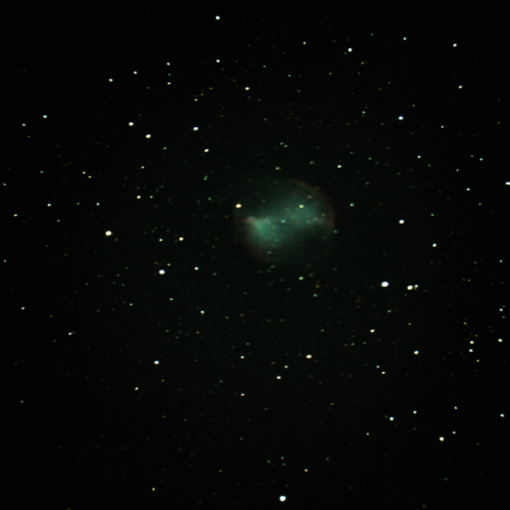For astrophotography of deep space objects like galaxies and nebulae, I would say little is to be gained from better than 2 arc-sec per pixel. Even at 2 arc seconds other factors play a significant role in useful resolution. How stable are your skies? What size aperture is your scope. How good is your mount over the integration period? How good is your alignment? 2 arc seconds is a rule of thumb. It is doubtful that around Syracuse that the sky is better than 2 arc-sec and you can’t correct for it – without adaptive optics. A 4″ aperture scope […]
EAA Lessons
About a year ago, I wondered what magnification I was getting with my astrophotography set up. The best answer came from an article on Cloudy Nights. That article said that there really isn’t any answer to the question of magnification in photographs, but you might approximate the magnification by considering your eye as the eyepiece at the main focal plane of your telescope. The human eye has a focal length of 22 mm, so the magnification your eye would see can be calculated by dividing the focal length of the telescope in millimeters by 22 millimeters. Using that algorithm gave […]
Flat frames illuminate where dust, vignetting, and other imperfections in the optical path and are used by imaging software can use the flat frame to compensate when processing the image. Flat frames are used with dark frames and bias frames to round out the calibration set. You don’t need to do any of these frames, but your images will come out better and less noisy if you do. If you disassemble your camera from your telescope, you will want to take flat frames each session because there is no guarantee the camera will have the same alignment when you reassemble […]
Traditional visual astronomy is an undoubtedly joyous thing. It’s those first looks at the cloud belts of Jupiter, the rings of Saturn and the stunning cores of globular clusters that hooked us on this hobby to begin with. If you have enough aperture (your telescope is big enough), you can even catch some “faint fuzzies” … galaxies. Unfortunately for us (and the interested public), those “fuzzies” are exactly that… featureless grey smudges that don’t resemble anything let alone galaxies. But alas, aperture is expensive, time consuming, difficult to set up and difficult to maintain and, before you realize it, your […]




